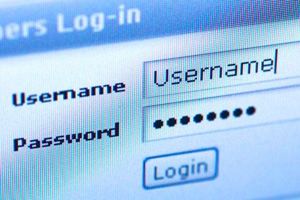
450,000 user passwords on Yahoo hacked, 6 million LinkedIn accounts hacked! Most of us seem to be increasingly getting used to such security breaches.
However, what many of us don't realize is how our little prudence can help us protect ourselves from becoming victim to such hackings. It's time we start guarding our passwords, the way we guard our ATM pins.
As it is the weak passwords which make our accounts vulnerable. So, here are few simple tips to protect your passwords.
Use different passwordsMake sure you use different passwords for each of your accounts.
Remember to log offAlways log off if you leave your device and anyone is around—it only takes a moment for someone to steal or change the password.
Keep your anti-virus up to dateUse comprehensive security software and keep it up to date to avoid keyloggers (keystroke loggers) and other malware.
Avoid using public PCsAvoid entering passwords on computers you don't control (like computers at an Internet cafe or library) -—they may have malware that steals your passwords.
Avoid entering passwords when using unsecured Wi-Fi connections (like at the airport or coffee shop) -— hackers can intercept your passwords and data over this unsecured connection.
Never share your passwordDon't tell anyone your password. Your trusted friend now might not be your friend in the future. Keep your passwords safe by keeping them to yourself.
Change passwords regularlyDepending on the sensitivity of the information being protected, you should change your passwords periodically, and avoid reusing a password for at least one year.
Use easy to remember, hard to guess passwordsDo use at least eight characters of lowercase and uppercase letters, numbers, and symbols in your password. Remember, the more the merrier.
Strong passwords are easy to remember but hard to guess. Iam:)2b29! — This has 10 characters and says "I am happy to be 29!" I wish.
Use the keyboard as a palette to create shapes. %tgbHU8*- Follow that on the keyboard. It's a V. The letter V starting with any of the top keys. To change these periodically, you can slide them across the
Keep tip sheetYou can also write a "tip sheet" which will give you a clue to remember your password, but doesn't actually contain your password on it. For example, in the example above, your "tip sheet" might read "To be, or not to be?"
Chec password strengthCheck your password strength. If the site you are signing up for offers a password strength analyzer, pay attention to it and heed its advice.
 INFORMATION CLUB
INFORMATION CLUB Technical Tips
Technical Tips Tips To Keep Your Passwords Safe
Tips To Keep Your Passwords Safe INFORMATION CLUB
INFORMATION CLUB Technical Tips
Technical Tips Tips To Keep Your Passwords Safe
Tips To Keep Your Passwords Safe
